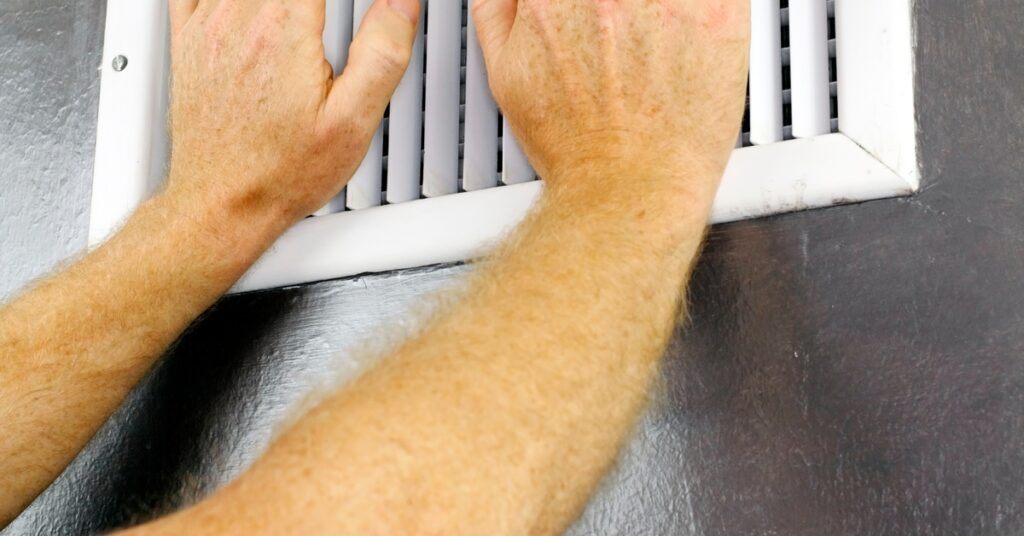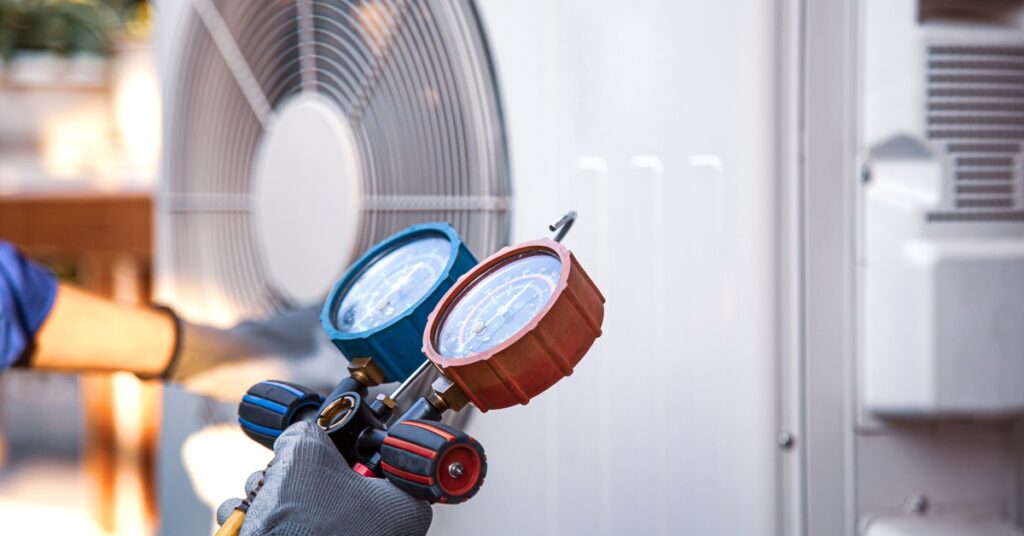As you walk through your house, does it feel like one room is too hot, one is too cold, and another is just right? This frustrating temperature inconsistency often occurs when you have an unbalanced HVAC system since air does not flow properly. A properly functioning system ensures that every room in your home receives the right amount of air, allowing it to circulate at the optimal temperature.
This guide explains the five things to know about HVAC air balancing, enabling you to prevent uneven airflow in your home. Find out why balanced air is important, how to check our system, the benefits of a balanced system, and more!
Why Air Balancing Matters for Your Home
A properly functioning HVAC system ensures that every room in your home receives the right amount of air, allowing it to circulate at the optimal temperature. Air balancing increases feelings of comfort, saves energy, and increases the system’s longevity.
Improves Comfort
Temperature variations between rooms stay minimal when your HVAC system distributes air properly, eliminating hot and cold spots. Therefore, air balancing allows for a more consistent and comfortable living environment throughout the home.
Better Energy Efficiency
Manufacturers design HVAC systems to evenly blow air through the vents in your home, and when it’s uneven, the machine works harder to try to “fix” it. One reason unbalanced systems waste energy is that they run longer cycles, which require more energy and result in higher bills.
Increases System Longevity
Having a system that constantly cycles to achieve an even airflow also puts more wear on internal components and increases the risk of premature failure. More specifically, unbalanced air distribution creates pressure imbalances that strain fans, motors, and ductwork. The longer you ignore this issue, the more likely it is to become a bigger problem or lead to total HVAC failure.
Common Causes of Unbalanced Air Distribution
Another thing to know about HVAC air balancing is that uneven airflow can occur for many reasons. While some issues, such as blocked vents, are easy to fix, others may require professional assistance. Here are four of the most common causes of unbalanced air distribution.
Blocked Vents

Sometimes, the simplest thing can cause an unbalanced HVAC system—blocked vents. Airflow gets obstructed and cannot follow the natural flow of the ducts if you shut your vents, have rugs, or furniture covering them. These blocked vents lead to hot and cold spots that you can easily fix by ensuring all vents remain open and unobstructed.
Dirty Air Filters
Your HVAC uses the air filter to trap any contaminants that might compromise your air quality. However, dirty filters restrict airflow and can cause uneven heating or cooling throughout your home. Ideally, you should check your filter every six weeks, but you only need to replace it if it’s visibly dirty or clogged.
Poor Ductwork
Things start to get trickier when it comes to ductwork since you can’t see it; your ducts run throughout the home and are often between walls and floors. Your home’s air may not flow efficiently throughout the home if the installers and home builders use ducts that are too small or too large, which can cause hot or cold spots.
Moreover, air may escape as it travels from the HVAC system to the vent if there are gaps, holes, or disconnected joints in your ductwork. Poor ductwork can result in energy waste and discomfort for you and your family.
Damaged HVAC System
Your HVAC system may also have uneven airflow if something’s wrong with the system and its components. Like any machine, your HVAC system can encounter issues that may affect its performance. Some common problems include malfunctioning fans or motors and low refrigerant levels in the AC unit.
Call a professional HVAC technician to promptly inspect and repair the issue if you notice any unusual noises, odors, or temperature fluctuations from your HVAC system. Neglecting these problems can lead to more significant issues and potentially costly repairs down the line.
How To Check Your HVAC Air Balancing
While areas of your home may feel slightly different temperatures, that doesn’t automatically mean your HVAC system is to blame. For example, the sunlight shining through could warm it if a room has a large window; likewise, your mudroom may feel chilly if a slight draft comes through the door.
Analyze the problem and potential causes to get to the root of the issue. You should check windows for drafty frames or gaps, as well as insulation in walls and attics. Immediately addressing any issues you find could help to balance temperatures without needing to adjust your HVAC system.
You can also use an external room thermometer to check the temperature in various areas as you inspect your home. Record the results and highlight any differences of two to three degrees or more. Note everything so you can discuss your findings with an HVAC technician when you contact a company for repairs.
When To Call Professional HVAC Service

Issues with your HVAC system are rarely a DIY fix due to the complexity of these machines. It’s time to call a professional if you notice persistent temperature variations in your home that aren’t due to blocked vents or dirty filters. HVAC technicians possess the expertise and knowledge to accurately diagnose and resolve any issues with your system.
In addition to temperature variations, other signs may indicate a problem with your HVAC system. These include strange noises coming from the unit, unusual odors, or an increase in energy bills without any change in usage habits. The sooner you get the system fixed, the easier it is to prevent problems from snowballing into an even bigger, more expensive fix.
How Do They Check Systems?
Technicians use specialized tools to ensure your HVAC system operates efficiently when checking airflow balance. This includes the following:
- Air balancing hood: Measures airflow volume directly at vents, helping identify areas with excessive or insufficient airflow.
- Manometers: Assess system pressure within ducts, allowing technicians to detect imbalances caused by blockages or leaks.
- Hygrometers: Checks the humidity level to ensure optimal air quality and comfort.
HVAC technicians begin with a visual inspection where they’ll check your vents, HVAC system, and ductwork for causes you may have missed. From here, they’ll use the air balancing hood to measure airflow at each vent, while manometers assess static pressure in the ducts to spot imbalances. They may also use hygrometers to check humidity levels and ensure proper moisture levels for optimal comfort.
After collecting data from these tools, HVAC technicians will make necessary adjustments to improve the overall efficiency of your system. These adjustments may include cleaning or replacing filters, adjusting dampers and valves, or making repairs to ductwork.
Contact Us
Style Crest is an air conditioning company that specializes in HVAC services for residential properties. Our team has the tools and expertise to evaluate your system and make the necessary repairs so that the air moves evenly throughout your home. Schedule regular maintenance and HVAC repairs with Style Crest to ensure every room in your home feels comfortable.